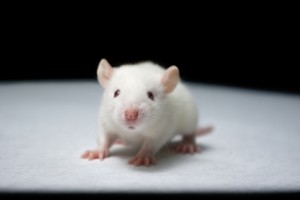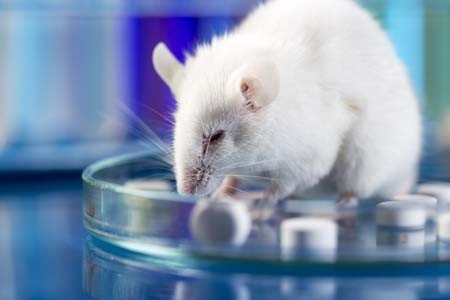Paternal heroin self-administration in rats increases drug-seeking behavior in male offspring via miR-19b downregulation in the nucleus accumbens
Wenjing Gao et al reported in Neuropsychopharmacology (2025) that “paternal heroin self-administration in rats results in increased heroin-seeking behavior in F1 male offspring. This effect was replicated by zygotic microinjection of sperm RNAs from heroin self-administration-experienced rats, but not from yoked infusion pairs, highlighting the role of sperm non-coding RNAs changes induced by paternal drug-seeking behavior (and not by just passive receipt of heroin.) Analysis of non-coding RNA changes in the NAc [nucleus accumbens] and sperm of the F0 generation revealed a significant correlation in miRNA expression profiles, particularly the downregulation of miR-19b in both tissues, which was linked to the observed phenotype. The heightened heroin-seeking behavior in the male F1 generation could be reversed by supplementing synthetic miR-19b in F0 sperm RNA or introducing miR-19b into the NAc of F1 offspring. These findings suggest that sperm miRNAs like miR-19b mirror changes in brain miRNAs, participate in epigenetic transmission of acquired traits from F0 to F1, as well as in regulating heroin SA behavior of offspring.”
Editor’s Note: These data suggest that dad rats self administering heroin transmit a vulnerability to self administering heroin to their offspring. It does not occur if the dad rats merely get heroin passively. It is likely that these data could be extrapolated to humans. If so, there is a question of whether taking opiates for pain (administered by a nurse as opposed to self administrated) would transmit vulnerability to the offspring. In any event, it may be that a heroin addict who self administers the drug not only puts himself at risk but also his male offspring. This makes clear that methods of producing primary protection in offspring for opiate addiction deserve exploration
In Rats, Weight-Loss Drug Lorcaserin Reduces Opiate Use
The serotonin 5HT-2c agonist drug lorcaserin (Belviq) was approved by the US Food and Drug Administration in 2012 for the treatment of obesity and weight-related conditions (such as high blood pressure, type 2 diabetes, or high cholesterol) in adults. A 2017 article by researcher Harshini Neelakantan and colleagues in the journal ACS Chemical Neuroscience reports that in rats, lorcaserin may also reduce opiate use.
The rats had been self-administering the opiate oxycodone. After receiving lorcaserin, the rats were less likely to consume oxycodone and less likely to seek it out. The rats were also less responsive to cues that had previously led them to consume oxycodone, such as lights or sounds that occurred when oxycodone was available.
Serotonin 5HT-2c receptors both regulate psychostimulant reward in the brain and play a role in reactivity to cues like the lights and sounds the rats associated with oxycodone. Lorcaserin’s effect on these serotonin receptors explains how it could reduce the rats’ drug use.
Clinical trials are expected to examine whether lorcaserin can reduce opiate use in humans in addition to assisting with weight loss.
Weight Loss Drug Lorcaserin Cuts Opiate Use in Rats
 Lorcaserin is a drug approved for weight loss in very obese patients. It stimulates serotonin 5 HT-2c receptors thought to control appetite by inducing the secretion of the polypeptide pro-opiomelanocortin. In a 2017 article in the journal ACS Chemical Neuroscience, researcher Kathryn Cunningham and colleagues reported that the drug had reduced opiate use and craving in rats. Previous research by Cunningham showed that lorcaserin reduced cocaine seeking in rats.
Lorcaserin is a drug approved for weight loss in very obese patients. It stimulates serotonin 5 HT-2c receptors thought to control appetite by inducing the secretion of the polypeptide pro-opiomelanocortin. In a 2017 article in the journal ACS Chemical Neuroscience, researcher Kathryn Cunningham and colleagues reported that the drug had reduced opiate use and craving in rats. Previous research by Cunningham showed that lorcaserin reduced cocaine seeking in rats.
Most treatments for opiate addiction work by occupying opiate receptors so that opiates are prevented from stimulating them, thus reducing the pleasurable effects of the opiates. It is not yet well understood how drugs like lorcaserin that target serotonin 5 HT-2c receptors affect the brain’s reward system.
In the study, rats were trained to self-administer oxycodone. They were also trained to associate certain lights and sounds with oxycodone availability. Lorcaserin reduced the rats’ drug-seeking behavior and also weakened the link between the light and sound cues and the drug-seeking behavior.
Future research may explore whether drugs like lorcaserin can reduce opiate use in people.
Currently, there are a few options to treat opiate addiction. N-acetylcysteine (NAC) is an over-the- counter (nonprescription) drug that has been shown to decrease opiate use in both animals and humans. NAC also decreases use or craving for many other drugs of abuse including cocaine, alcohol, nicotine, and marijuana. NAC reduces the excitatory glutamate signal in the reward area of the brain (the nucleus accumbens) by increasing the number of transporters carrying glutamate out of the synapse and into glial cells. It has an excellent side effects profile and can readily be used in opiate-addicted patients.
Opiate replacement therapy with methadone or the partial opiate agonist buprenorphine is one treatment option for opiate addiction. Buprenorphine is also combined with the opiate antagonist naloxone in a drug called Suboxone, which can reduce opiate use. Naloxone is a pure opiate antagonist that can rapidly reverse the respiratory-suppressing effects of an overdose of opiates.
Opiate and Alcohol Abuse
Deaths from opiate abuse are occurring in the US at about the same rate as automobile fatalities. At a recent talk, researcher Richard Ries discussed treatment of opiate addictions and the current epidemic of unintended opiate overdoses. Most opiates being abused come from other people’s leftover prescriptions. The best way to prevent opiate abuse is to throw out unused painkillers when they are no longer needed.
Many overdoses from opiates also involve alcohol and benzodiazepines, which can contribute to breathing difficulties.
There are several treatments available that can help patients abstain from using opiates. Treatment with opioid receptor antagonists (such as naltrexone (Rivia or long-acting Vivitrol, which is taken as an injection and lasts for 1 month), partial agonists (like buprenorphine), or full agonists (like methadone) results in, on average, an 80% decrease in the rate of hospitalization and an 80% reduction in crime, as well as a marked decrease in AIDS transmission. Without treatment, it is very difficult for people with opiate addictions to maintain abstinence, and relapse rates are extraordinarily high.
Treatment of Alcohol Abuse and Benzodiazepines
Ries also discussed data on treatment of alcohol abuse. He emphasizes that some aspects of withdrawal, such as sleep disturbance, can last a month or more after a parient’s last drink, putting the patient at high risk for relapse. Gabapentin, which is most often prescribed to prevent seizures, helps patients with this phase. Ries endorsed the combination of gabapentin and naltrexone as especially helpful. Carbamazepine is widely used in Europe for the treatment of alcohol abuse, and Ries also strongly endorsed the drug as another way of avoiding benzodiazepines. Several large placebo-controlled trials suggest that the anticonvulsant topiramate is also effective for long-term alcohol avoidance.
Editor’s Note: Another researcher, Mark Frye, found that women with bipolar disorder are more than seven times more likely than women in the general population to abuse alcohol, often in an attempt to self medicate their residual anxiety and depression. Excellent treatment of mood in bipolar disorder may have the double benefit of helping patients avoid alcohol abuse. The nutritional supplement n-acetylcysteine (NAC) also helps improve mood in bipolar disorder and has positive placebo-controlled data in heroin, cocaine, and alcohol avoidance.
Blockade of Kappa Opiate Receptors Blocks Proneness to Relapse in Addiction
George Koob, the new director of the National Institute for Alcohol Abuse and Alcoholism (NIAAA), showed that animals with extended access to self-administered abuse substances like cocaine or morphine will escalate the amount of drug they self-administer. When the drug is no longer available starting after a delay of one to two weeks, the number of times they press a lever in the presence of a cue previously associated with drug availability progressively increases over a period of one to two months (even through no drug is available). This is called incubation and reflects a measure of “craving” or relapse potential.
This incubation effect, or increasing degree of craving for a drug, is also seen clinically in people who are heavy drug users and then achieve abstinence or are incarcerated and have a period of forced abstinence. As the duration of abstinence increases, they experience an increased proneness to relapse.
Dynorphin is a psychomimetic opiate peptide that is produced in the brain and causes anxiety and dysphoria when it is given to humans. While opiates like morphine and heroin that produce euphoria and antipain effects act at a mu opiate receptor, dynorphin acts at a kappa opiate receptor. Chronic cocaine use gradually increases levels of dynorphin in the brains of addicts and also increases kappa receptors, thus converting what is often initially a euphoric drug experience into an anxiety-producing and dysphoric one.
If kappa receptors are blocked, the incubation effects during abstinence described above do not occur, and presumably addicts would be less relapse-prone. No kappa antagonist is currently available for human use, but if one combines buprenorphine (a mixed opiate agonist/antagonist) with naloxone or naltrexone (which selectively block the mu opiate receptors), one would in effect have a kappa receptor antagonist. Koob showed that this drug combination could prevent the incubation effects in abstinent animals. Further study might lead to advances in the treatment of addition in humans.




